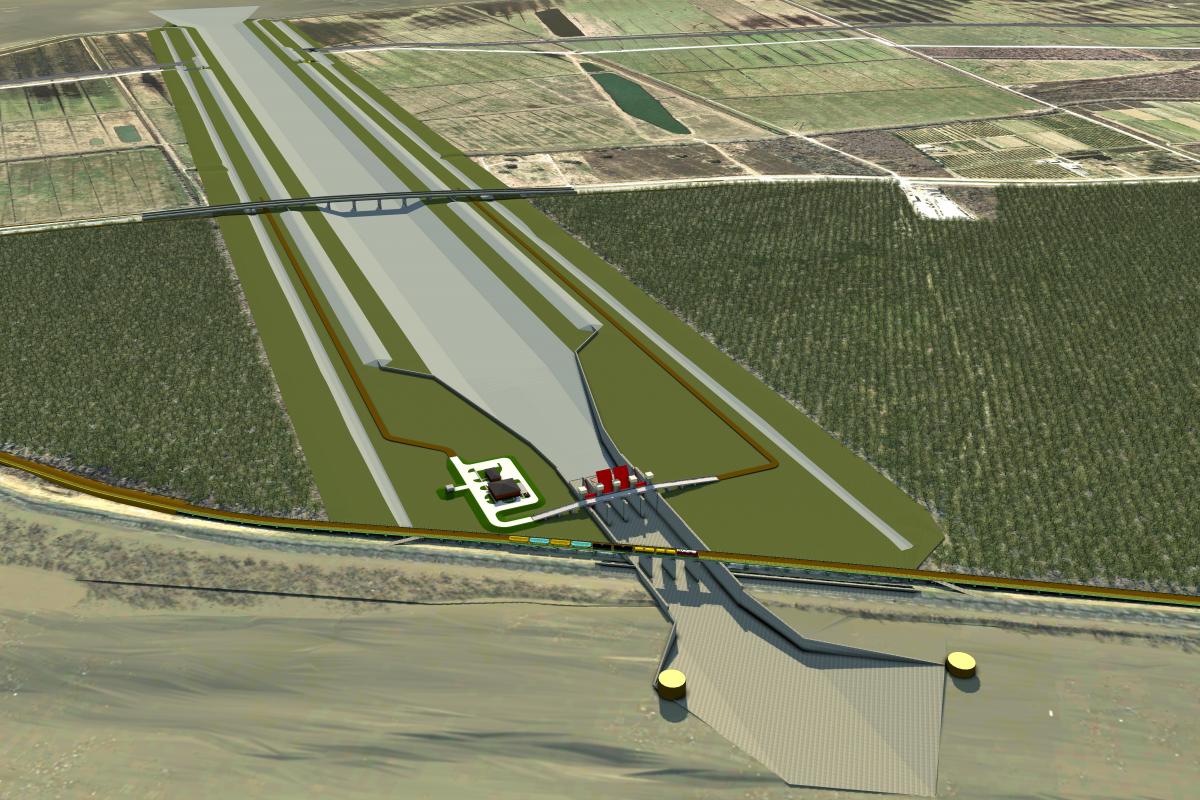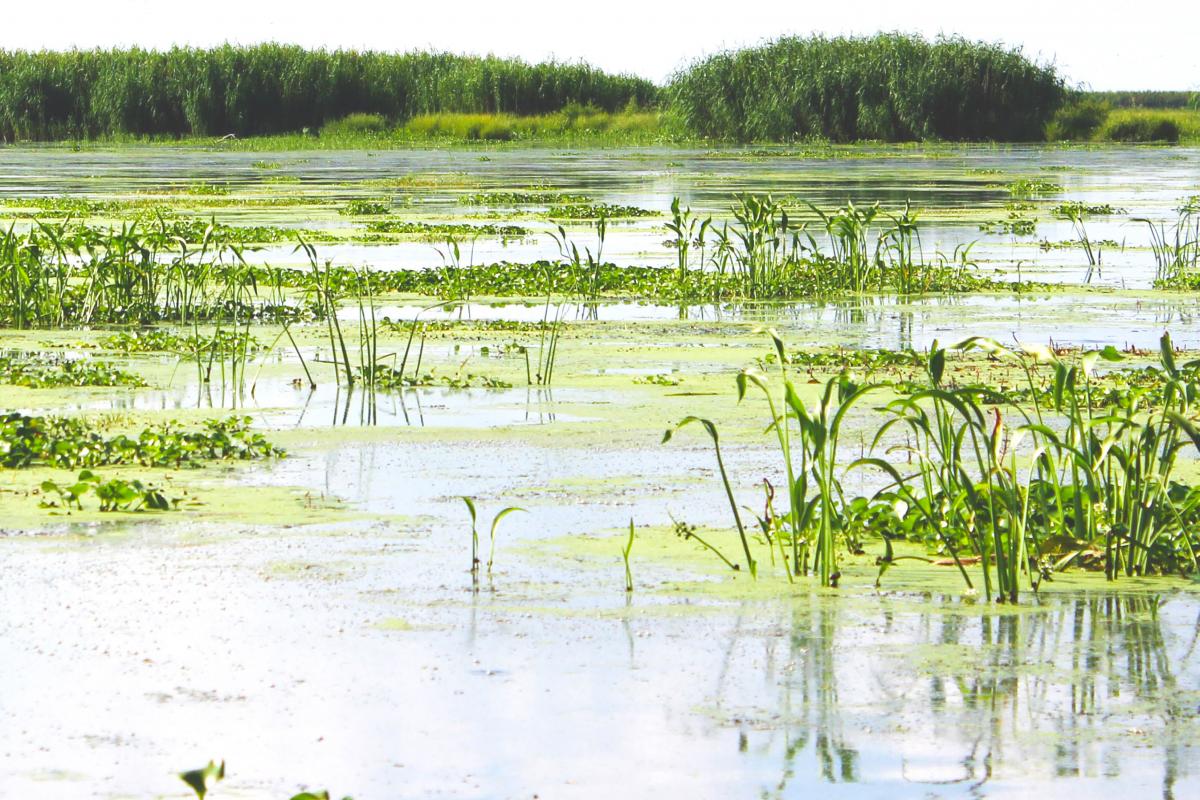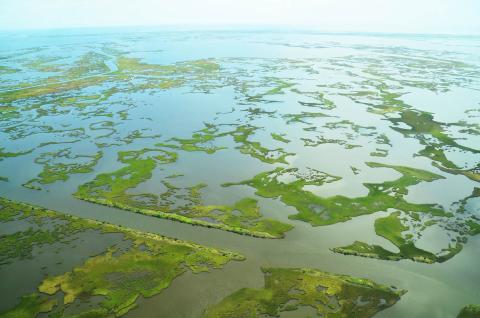The Louisiana Trustee Implementation Group is seeking public input on a draft restoration plan proposing an investment of up to $2 billion in the Mid-Barataria Sediment Diversion project. If approved, the large-scale project would reconnect the Mississippi River to Louisiana’s Barataria Basin. The project will allow the controlled release of freshwater, nutrients and sediment back into the basin to rebuild wetlands and contribute to the broader restoration of its ecosystem.
The Draft Phase II Restoration Plan #3.2 (PDF, 152 pages), is available for public comment. Originally open for 60 days, public comment was extended to 90 days through June 3, 2021, with virtual public meetings to present the plan and environmental impact statement April 6, 7, and 8 2021. The plan evaluates six design alternatives for the diversion project and identifies one of them as preferred.
NOAA and the Coastal Protection and Restoration Authority (CPRA) are lead Trustees for the draft plan, which was prepared jointly with the other Louisiana Restoration Area Trustees. NOAA and CPRA also partnered with the Environmental Law Institute and Restore the Mississippi River Delta to co-host community conversations to learn more about the project, on March 22 and 23, April 20, and May 25.
Concurrent with release of the draft restoration plan, the U.S. Army Corps of Engineers released a draft environmental impact statement, also available for public comment for 90 days. The environmental impact statement and information on how to submit comments are on the Army Corps’ website.
Reducing Land Loss Exacerbated by the Deepwater Horizon Oil Spill
Louisiana and the Barataria Basin are in the midst of a land loss crisis. The Basin has lost more than 276,000 acres of land since the 1930s. Wetlands in the Basin were the most heavily impacted by the Deepwater Horizon oil spill, which accelerated a severe land loss trend threatening Louisiana’s estuaries. The oil spill and response activities significantly accelerated the rate of wetland loss in the area.

would connect the Mississippi River (bottom)
to the Barataria Basin (top). Image: CPRA
The project would restore and sustain a significant amount of wetland habitat—tens of thousands of acres—and the resources that depend on them, over the next several decades. At peak capacity, the proposed preferred alternative would transport up to 75,000 cubic feet per second of freshwater and its sediment and nutrients—harnessing nature through engineering to re-establish the natural process that originally built Louisiana’s coastal wetlands.
Public Comment Period and Virtual Public Meetings
The public comment period was extended from 60 days to 90 days on April 20. You can submit yours through June 3, 2021. We encourage you to review and comment on the draft plan by submitting comments online, by mail, or during virtual public meetings listed below.
- Online: https://parkplanning.nps.gov/MBSD
- Mail:
U.S. Army Corps of Engineers, New Orleans District
Attn: CEMVN-OD-SE, MVN-2012-2806-EOO
7400 Leake Avenue, New Orleans, LA 70118
We co-hosted virtual public meetings with the Army Corps of Engineers on April 6 - 8, 2021. We presented information on the draft plan, and the Army Corps presented on the draft environmental impact statement.
Meeting and presentation recordings are at the U.S. Army Corps of Engineers' Mid-Barataria Sediment Diversion web page. Look for "DEIS Meeting Recordings" in the left-hand column of the page.
Virtual Community Conversations

Image: CPRA
The Louisiana Trustee Implementation Group, CPRA, and the Environmental Law Institute partnered to host dialogues—facilitated by the Restore the Mississippi River Delta—to provide information on the Mid-Barataria Sediment Diversion.
These virtual meetings provided the public with an informal opportunity to learn and ask questions about the project and the permitting process. CPRA and Louisiana Trustees guided participants through the draft environmental statement and restoration plan. We also discussed how participants can participate in the upcoming formal public meetings and submit formal public comments.
These meetings were not an opportunity to comment publicly on the draft restoration plan and draft environmental impact statement, like the meetings scheduled for April 6 - 8. These virtual community conversations were a chance to better understand the two documents and the Mid-Barataria Sediment Diversion project through a dialogue with the participating organizations.
Community Conversation Video Recordings
Additional Background Information and Links
Recognizing the loss of marsh productivity caused by the Deepwater Horizon oil spill and the importance of Louisiana’s marshes to the Gulf of Mexico ecosystem, the historic 2016 Natural Resource Damages settlement allocated almost half of the funding, $4 billion, to restoring Louisiana’s coastal and nearshore habitats.
In 2017, the Louisiana Trustee Implementation Group released a draft and in 2018 approved a final strategic restoration plan prioritizing large-scale sediment diversion, marsh creation, and ridge restoration techniques and approaches for the Barataria Basin. The strategic plan included the Mid-Barataria Sediment Diversion and other projects for evaluation and planning.
More Information and Plan Documents
- Draft Phase II Restoration Plan #3.2: Mid-Barataria Sediment Diversion (PDF, 152 pages)
- Draft Phase II Restoration Plan #3.2: Mid-Barataria Sediment Diversion Appendices (PDF, 170 pages)
- Mid-Barataria Sediment Diversion Trustee Implementation Group Fact Sheet (PDF, 2 pages)
- Coastal Protection and Restoration Authority Mid-Barataria Sediment Diversion Web Page
- Coastal Protection and Restoration Authority and Trustee Implementation Group Presentation (PDF, 24 pages)
- U.S. Army Corps of Engineers Draft Environmental Impact Statement Information and Presentations
- List of Repositories for the Draft Restoration Plan and Draft Environmental Impact Statement (PDF, 2 pages)
We’ll send emails out to Gulf Spill Restoration subscribers when any of this information is updated. If you’re not signed up, please do that today (via NOAA Fisheries).


